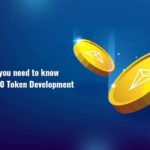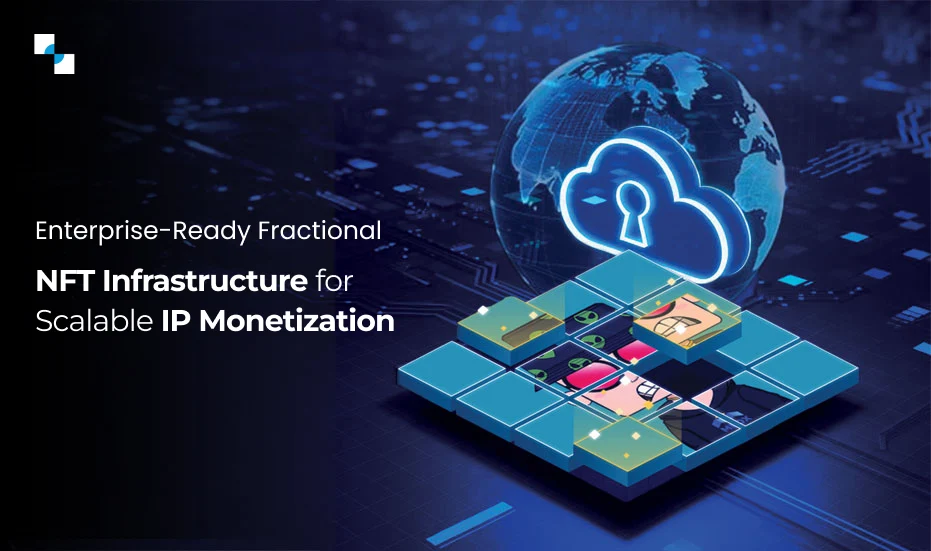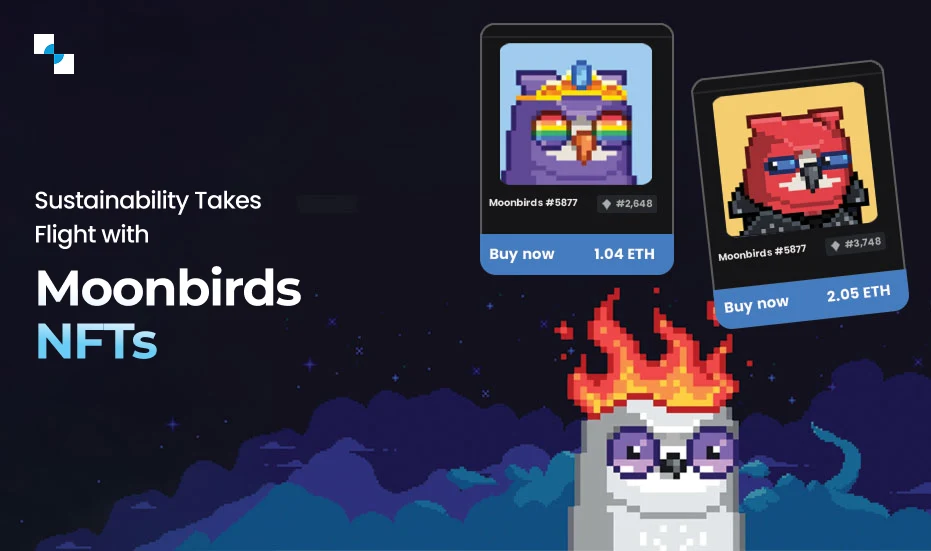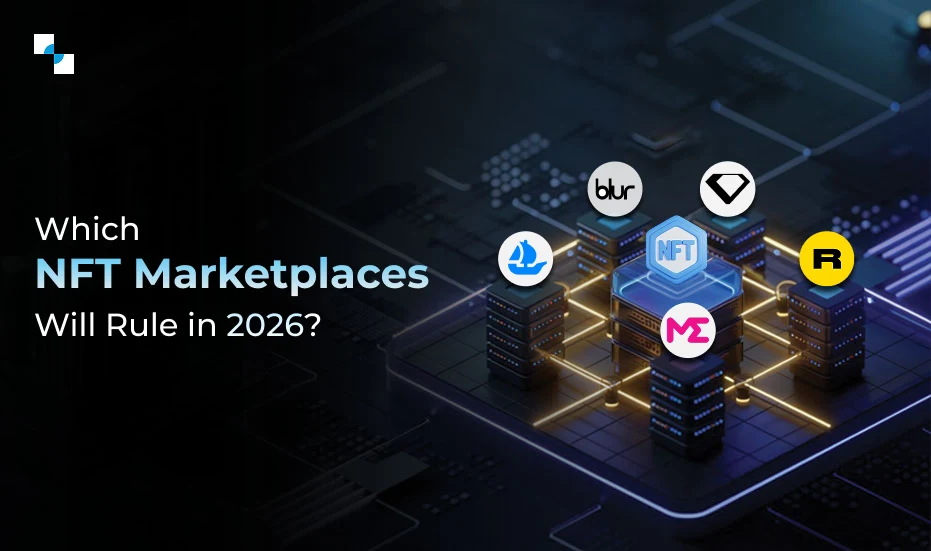A boom in crypto-collectibles and non-fungible token (NFT) Art has resulted from the widespread interest in non-fungible tokens. They are excellent for real-world assets, logistics, music royalties, and more because of their scarcity and uniqueness. As NFTs evolve, the demand to create non fungible token will increase and we may expect to see more experimental use cases adopted.
Crypto art and digital collectibles have been made possible by the creation of NFTs, but it doesn’t end there. NFTs may be used to establish the authenticity of a wide range of unique and collectible products, from real estate to logistics and even in the music industry.
While the NFT ecosystem development is still in its early stages, there are several aspects to explore about them, some of which already provide significant value to creators and consumers.
Get Cost to Create a Non Fungible Token
Schedule Free DemoWhat is the approach behind the development of NFTs?
Before we get into the numerous practical and real-world applications of non-fungible tokens, it’s essential to understand what makes them so popular and desired.
It was complicated to develop a digital rarity for assets prior to the inception of non-fungible tokens. Even though copyright safeguards are in place, users may easily duplicate or steal digital artwork.
The value of all non-fungible tokens is determined by three key factors: scarcity, demand, and the uniqueness of the underlying asset.
As a result, non-fungible tokens have become increasingly popular in a variety of applications and use cases.
Various use cases of NFTs:
NFTs in the field of Art
Non-fungible coins have aided in the resolution of long-standing scarcity issues in digital Art. When you can digitally replicate virtual artwork, how can you preserve it rare? While there is false Art in the real world as well, we can generally track it.
The majority of the value of crypto art comes from digitally authenticating its validity and ownership. We can’t show we own the original CryptoPunk since anyone can look at it on the Ethereum blockchain and download or store it.
When it comes to NFTs, the linked artwork isn’t always the most critical factor. Sometimes, establishing ownership of a particular asset is more vital. This attribute is what makes crypto Art one of the most widely used NFT applications.
NFTs as digital collectibles
Crypto collectibles are digital objects with unique algorithms that add worth to them. In a word, a crypto collectible is a digital/physical object that has been verified using blockchain technology. On the other hand, Crypto-collectibles are meant to be one-of-a-kind and restricted in quantity, unlike other cryptocurrencies.
CryptoKitties is a well-known example of digital collectibles. CryptoKitties, released in 2017, is a blockchain-based game in which each NFT symbolizes a virtual kitten that anyone can buy. You might wonder what makes these objects precious.
These non-fungible tokens, together with digital NFT art, account for a significant portion of purchases on NFT exchanges such as Opensea, BakerySwap, and Treasureland. Crypto art has a lot of overlap, and an NFT may be both a collectible and an artwork. These are our most sophisticated use cases at the moment.
The first tweet by Jack Dorsey is an excellent example of an NFT collectible. While a CryptoPunk is collectible and physically appealing, Dorsey’s NFT is valuable only for its rarity.
To sell the NFT, Dorsey used Valuables, a platform that tokenizes tweets. An offer can be made on any tweet. Anyone may make a counter-offer and outbid you. After that, the tweet author can accept or reject the bid. If they are ready, the tweet will be minted on the blockchain, resulting in a one-of-a-kind NFT signed by them.
Only the verified creator’s Twitter @handle is used to sign each NFT, ensuring that only the original author may mint them. This method creates a limited-edition digital collectible that may be exchanged or preserved. Selling a tweet is a difficult concept to grasp, but it’s a stunning example of how NFTs create collectability. It’s just a digital version of a signet ring.
NFTs in online gaming
With in-game purchases utilizing NFT potential growing famous, blockchain can elevate gaming to a whole new level. The need for unique in-game purchases in online gaming, with the price determined by rarity, uniqueness, and the value each of these things brings to your entire gaming experience, is driving blockchain gaming to become a new trend.
Gamers recognize the value of digital things purchased in-game, resulting in a multibillion-dollar business. Non-fungible tokens can be exploited to their maximum capacity in the gaming industry.
For gamers, gaming NFTs signify Art, collectability, and functionality. Consider Axie Infinity and Battle Pets, which are Pokémon-style games that make pets and other unique objects marketable in the form of non-fungible tokens that can be bought and traded on external, peer-to-peer marketplaces.
Build You Own NFT Token
Schedule Free DemoNFTs in Financing Business
It’s important to understand that not every NFT is inspired by a song, an artwork, or a collectible. In decentralized finance, NFTs also provide significant financial rewards (DeFi). Most will have some artwork, but their value is determined by their purpose.
JustLiquidity, for example, features a staking mechanism based on NFTs. In return for an NFT that permits them to enter the next collection, a user can stake a pair of tokens in a pool for a certain period of time. The NFT serves as an entry ticket, and after you’ve entered the next pool, it’s discarded. This technique generates a secondary market for these NFTs because of the access they provide.
NFT meal combinations from BakerySwap are another example of greater staking incentives for holders. If you donate BAKE, you will receive an NFT combination with a customizable level of staking power. These combinations can be gambled on, sold on the secondary market, or staked. The cocktail of non-fungible tokens, gamification, and DeFi is another fascinating use case for non-fungible tokens.
NFTs in Music
To create NFT token of music, you can link audio to an NFT in the same way you can attach a picture or video. Consider it a song’s digital “first edition.” There are some similarities between adding music to an NFT and adding Art to an NFT, but there are some differences.
For artists, getting a fair share of royalties is a major problem. However, two alternatives for reaching a fair result are blockchain-based streaming services and blockchain royalty monitoring. Competing for streaming services like Amazon Music or YouTube is difficult for small blockchain businesses. There were no apparent benefits when a giant like Spotify purchased MediaChain, a blockchain royalty system, in 2017.
Smaller ventures, on the other hand, have mostly relied on individual artists. Rocki is a platform for independent musicians to sell royalties and stream their music on the Binance Smart Chain. Their first royalty NFT sale on the site, which used the ERC721 token standard, raised 40 ETH for 50% royalties.
The adoption of this concept by larger streaming providers will determine whether it becomes more popular or not. Combining music with NFTs is a great use case, but it may struggle to gain traction without the help of record companies.
NFTs based on real-world assets
The deployment of NFTs to link real-world assets can help digitize the way we verify ownership. We generally deal with tangible property deeds in real estate, for example. Highly illiquid things (such as a home or land) can be moved onto the blockchain by creating tokenized digital assets of these documents. Authorities across the world haven’t been particularly supportive of this use thus far. Although it’s in the early stages of development, it’s one to keep an eye on in the future.
Shane Dulgeroff developed an NFT in April 2021 to represent a home for sale in California. A piece of crypto art is also connected to the token. The NFT and title of the property will be given to the winner of the auction.
When reselling smaller items, such as jewelry, an NFT might help prove actual ownership. A genuine, ethical diamond, for example, usually comes with a certificate of authenticity. This document also acts as evidence of your ownership rights. Anyone trying to sell the item without the certificate will be unable to establish its authenticity and may have trouble convincing buyers that they are the rightful owner.
NFTs can be utilized in the same way. When an asset is connected to an NFT, the NFT can become just as valuable as the asset itself. You may also embed the NFT within an item using a physical cold storage wallet.
NFTs for Course certificates and licenses
The usage of NFT allows certificates and licenses to be tokenized, ensuring their ownership and authenticity.
Many job applications, university admissions papers, and certifications are required to prove an applicant’s competence and expertise. However, there are only a few techniques to check the validity of these papers at times effectively. It’s also possible that individuals or businesses will falsify the documents.
Companies and organizations may obtain and verify certificates, providing evidence of course completion, thanks to the usage of NFT in certificate issuance. It may also be applied to operating an automobile.
Event Ticket as a token
The sports sector can profit from tokenizing tickets in the form of non-fungible tokens. If you’re curious, blockchain technology’s safe nature can handle the critical issue of counterfeit items and tickets. Due to these difficulties, the sports sector, in particular, suffers significant losses.
However, NFT use cases can provide blockchain-based sports game tickets to prevent illegal entry to significant sporting events.
However, the use cases presented here are not restricted to athletic events and may be applied to any music festival. As a result, a non-fungible token ticket issued on the blockchain can assist in addressing the problem.
Conclusion
Because of the growing popularity of NFTs, there’s a good chance we’ll see a lot more concepts and applications in the future. Not every NFT application has had the time to grow beyond an idea or a small prototype at this time. It’s possible that some of them may prove useless or unpopular. When it comes to more fundamental and simple problems like the scarcity of Art and antiquities, NFTs, on the other hand, are here to stay.
If you are planning to create non fungible token, Antier Solutions can help. We provide mission-driven solutions to build NFTs of diverse assets, such as audio, video, artwork, memes, gaming, real-world assets, and more. In addition, we specialize in building world-class NFT marketplaces that help you gain an essential competitive edge.
Schedule Free Demo of one of our NFT projects, or connect with our subject matter experts to share your need to create an NFT or get an idea of the cost to create a non fungible token.







